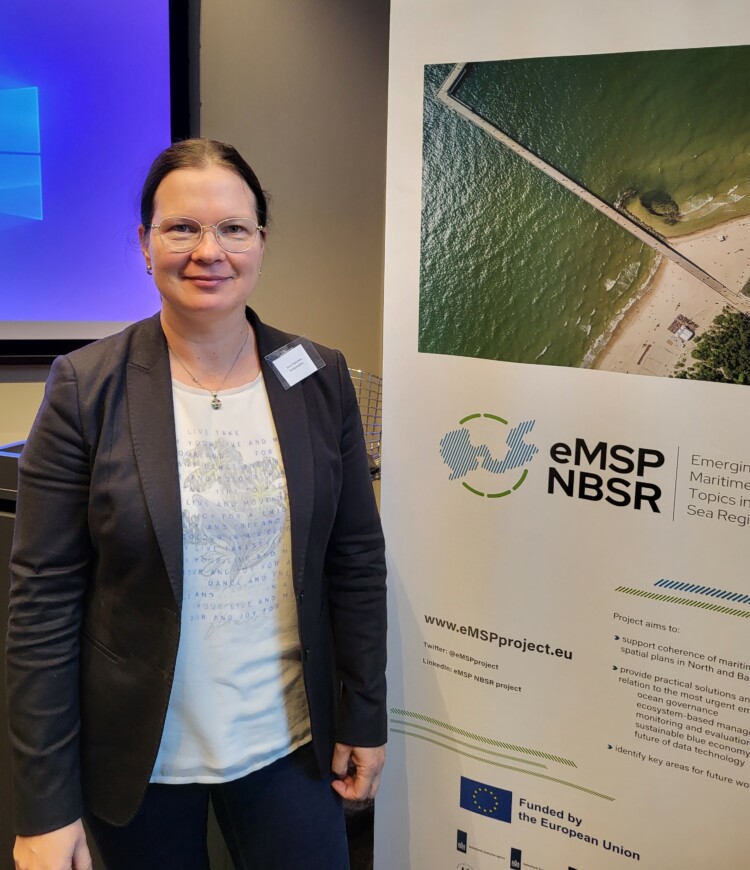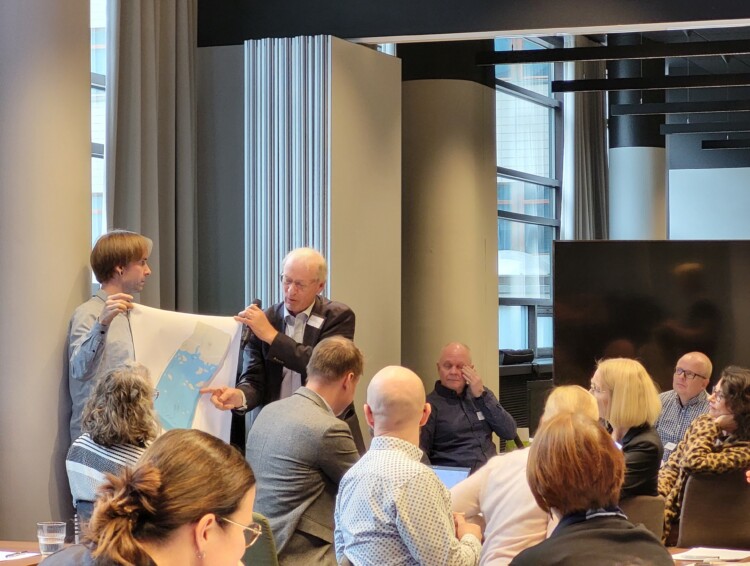Marine multi-use areas as a tool to support the transition of marine environments
The Finnish Maritime Spatial Planning Coordination brought together marine experts in Helsinki in October to discuss marine multi-use areas as drivers for sustainable blue economy. At the heart of a MariPark, a concept based on marine multi-use, is controlled development of activities at sea and the consideration of marine nature at all stages of planning and operation.
The concept has been developed in the eMSP NBSR project by partners in the North Sea region. In a MariPark two or more actors utilise marine resources in the same area by sharing common support functions such as maintenance and safety services, as well as monitoring and communication efforts. In Finland, the concept has been developed from a Baltic Sea perspective through discussions on the coordination of different activities within the national governance framework. Anne Nummela, a regional planning advisor at the Satakunta Regional Council, is one of the experts who have been involved in the process from the beginning.

“Different actors’ growing interest in marine areas and resources makes the discussion on multi-use a topical issue. However, Finland does not have the same pressing shortage of space as, for example, the North Sea countries with their smaller and busy sea areas. The ongoing discussion is therefore primarily from a proactive perspective. Offshore wind power projects, but also other forms of marine resource use, will in the future place increasing pressure on the marine environment, and we must also be prepared for this”, Nummela describes.
In line with the nature-inclusive design principle, a MariPark should have a net positive or at least neutral impact on the surrounding marine environment. As an example, reducing the nutrient load from fish farming by placing nutrient-binding seaweed cultivation in the same water body has been considered. This would allow one operator to mitigate the environmental pressure caused by another.
Offshore wind development will bring permanent infrastructure to the sea, not only with the foundations for the windmills but also the cables. During construction and operation, commercial fishing in the same area will not be possible. Offshore wind developers should consider with fishermen how to coordinate activities so that there is enough fish for consumers and, in terms of the marine environment, nutrient loads in the area are not increased by the disruption of commercial fishing activities that remove nutrients from the sea.
“Functioning ecosystems are a win-win situation and a prerequisite for planning activities in marine areas. Safeguarding marine biodiversity through nature-inclusive design and resource-efficient activities could therefore be taken to a new level in MariParks. MariParks could also contribute to the just transition listed in the objectives of the European Green Development Agenda by creating new business and employment opportunities,” says Nummela.
On the other hand, the benefits of multi-use can also be achieved outside of a MariPark.
“By concentrating certain activities in the same area, pressure can be alleviated elsewhere. In Finland, we are used to having areas at sea that remain unused, and this should be ensured also in the future. MariParks could be one way of doing this,” says Nummela.
In the North Sea, the idea of multi-use development is strongly based on marine energy production areas, but in Finland other possibilities are also explored.
“In Finland, a suitable place for combining different activities could be, for example, ports where many activities already co-exist. Fisheries, aquaculture, tourism and the bioeconomy could be possible areas for coordination. On the other hand, other future sectors that would benefit in one way or another from access to the sea or marine resources should also be considered openly.”
Maritime spatial planning is faced with the challenge of how to move from passive to active coordination. Nummela sees the role of maritime spatial planning in the development of multi-use primarily as bringing actors together and initiating discussions.
“MSP is a good way of communicating information and providing a starting point for action. However, responsibility for the actual development and implementation of MariParks should ultimately rest with the project actors themselves or, for example, with the municipalities.”

Finland’s current second round of maritime spatial planning will bring research, development and innovation more strongly into the planning table. The MariPark concept offers companies a concrete basis for this.
“MariPark development should proceed in an open manner. Challenges and hiccups may arise along the way, but mistakes will also lead to workable combinations that are not necessarily even conceivable at this stage”, Nummela sums up the core message.
The Finnish maritime spatial planning authorities are involved in the eMSP NBSR project for collaboration on maritime spatial planning in the Baltic Sea and the North Sea. One of the main project activities is to support sustainable blue economy. eMSP NBSR project Sustainable Blue Economy website https://www.emspproject.eu/project-activities/community-of-practice/sustainable-blue-economy/
The National Workshop on Marine Multi-Use and Maritime Spatial Planning was held in Helsinki on 10.10.2023 with a group of experts. The presentations and a summary of the event will be made openly available on www.merialuesuunnittelu.fi in late 2023.


